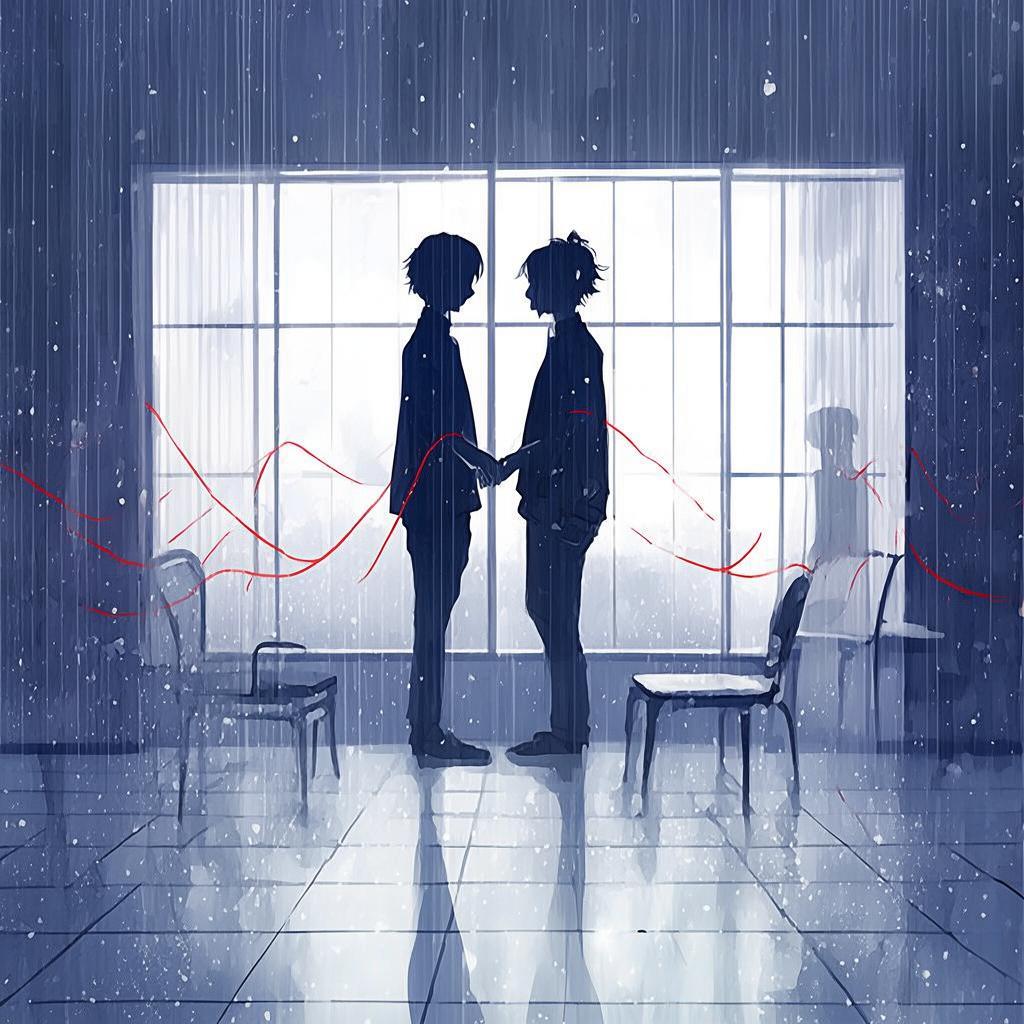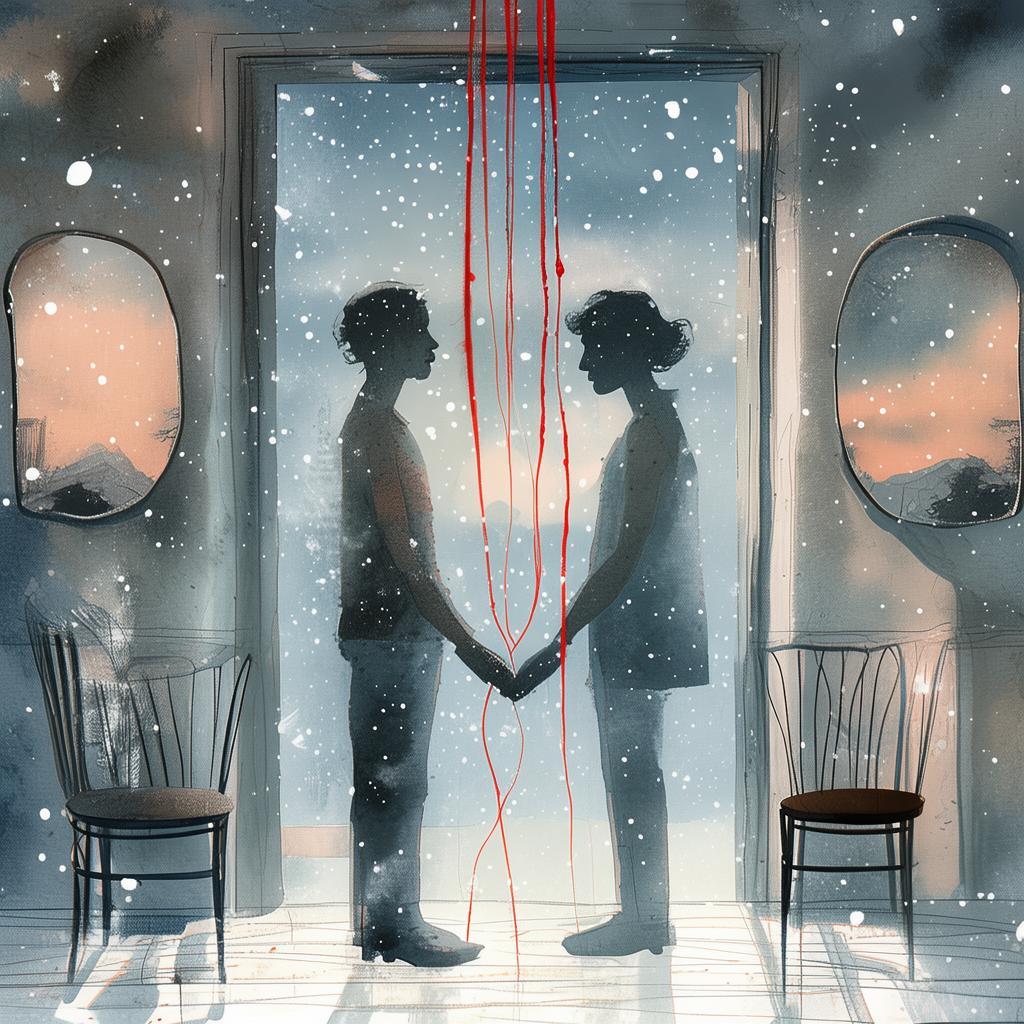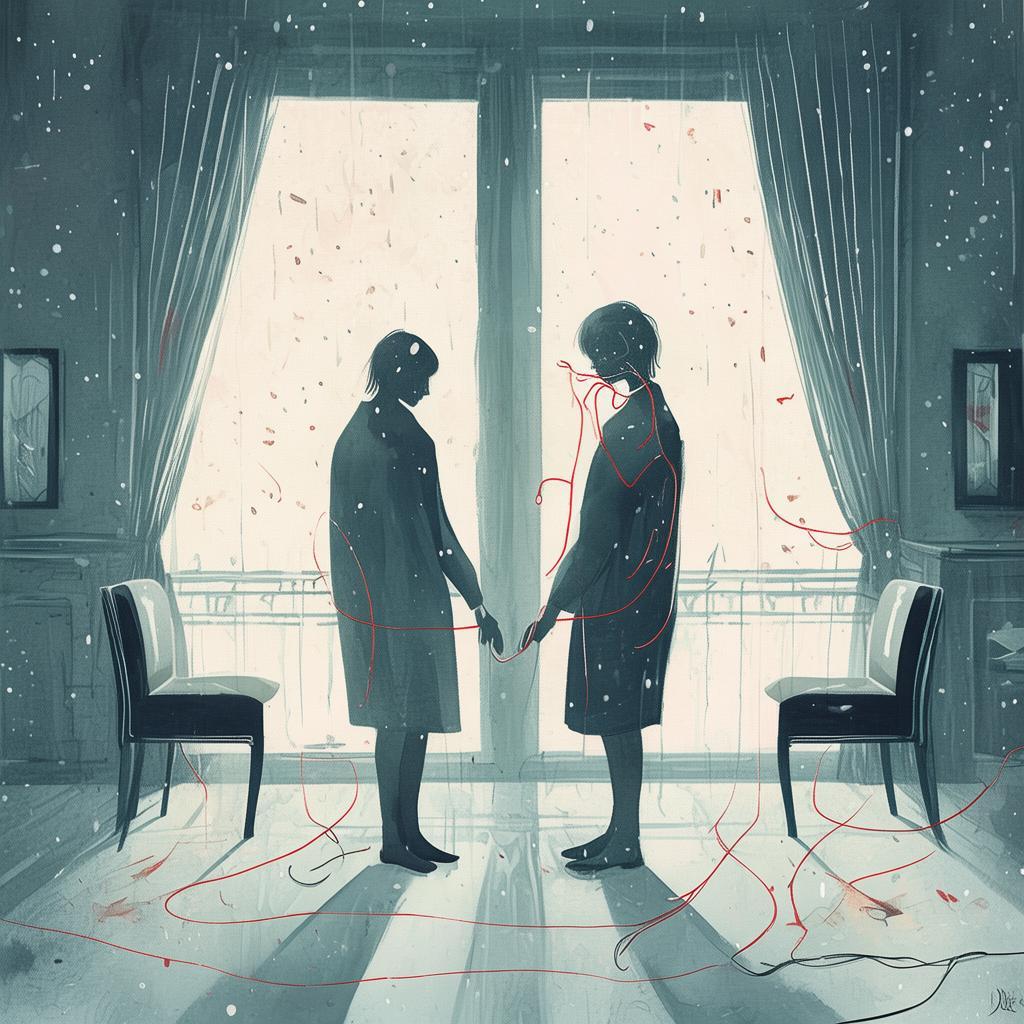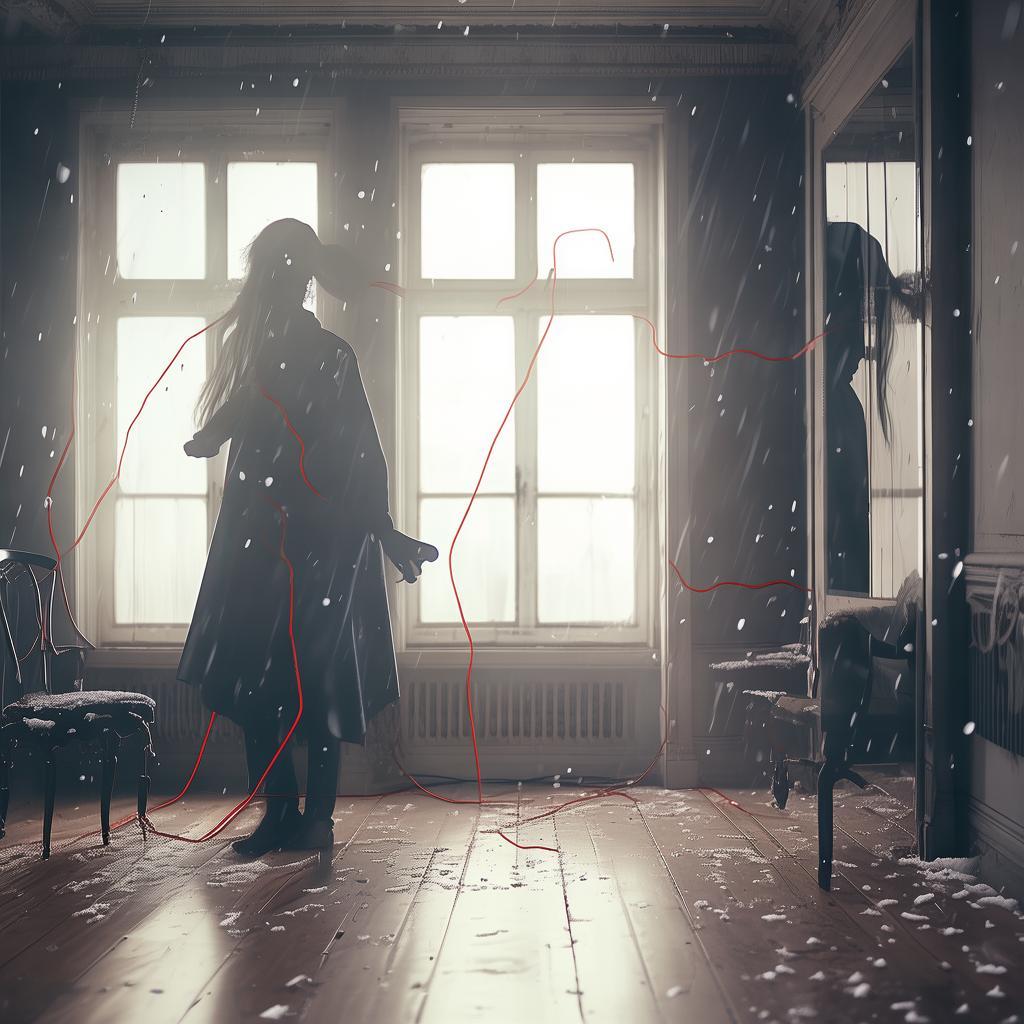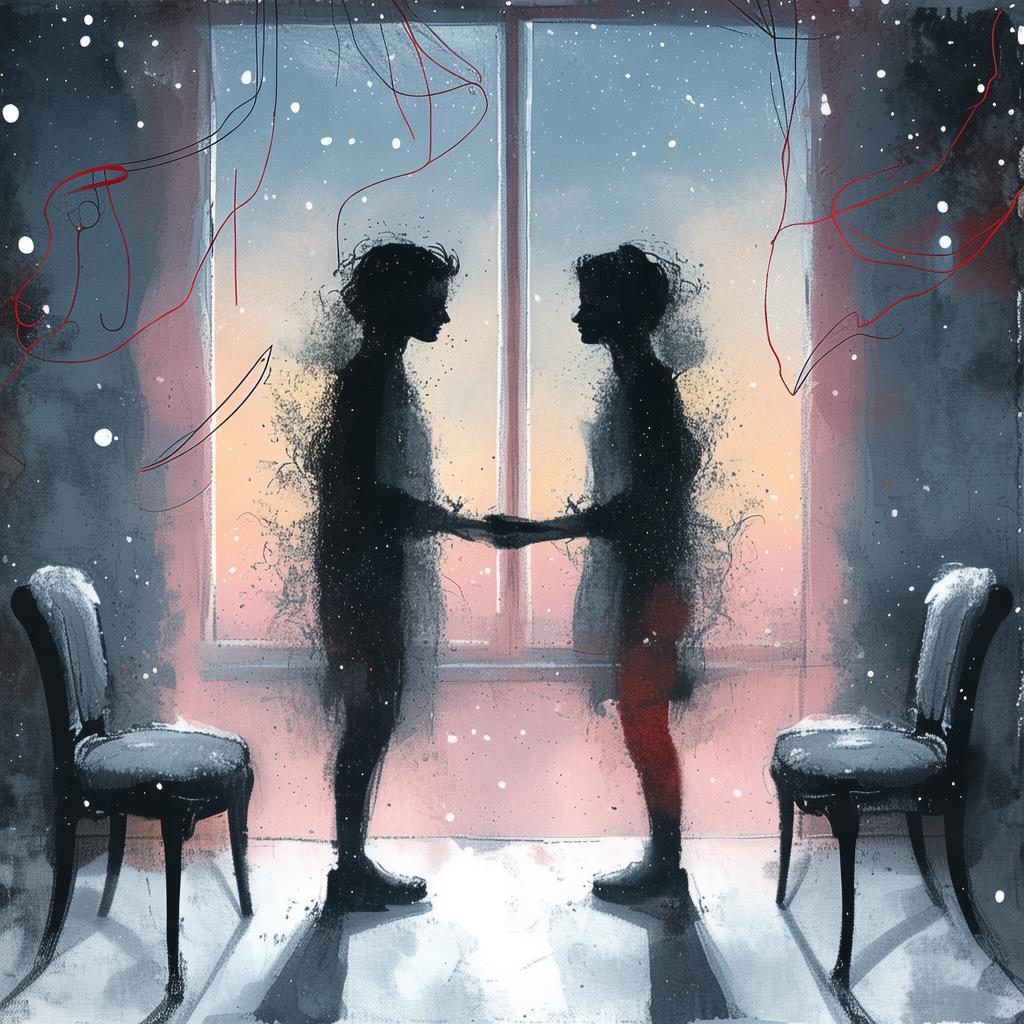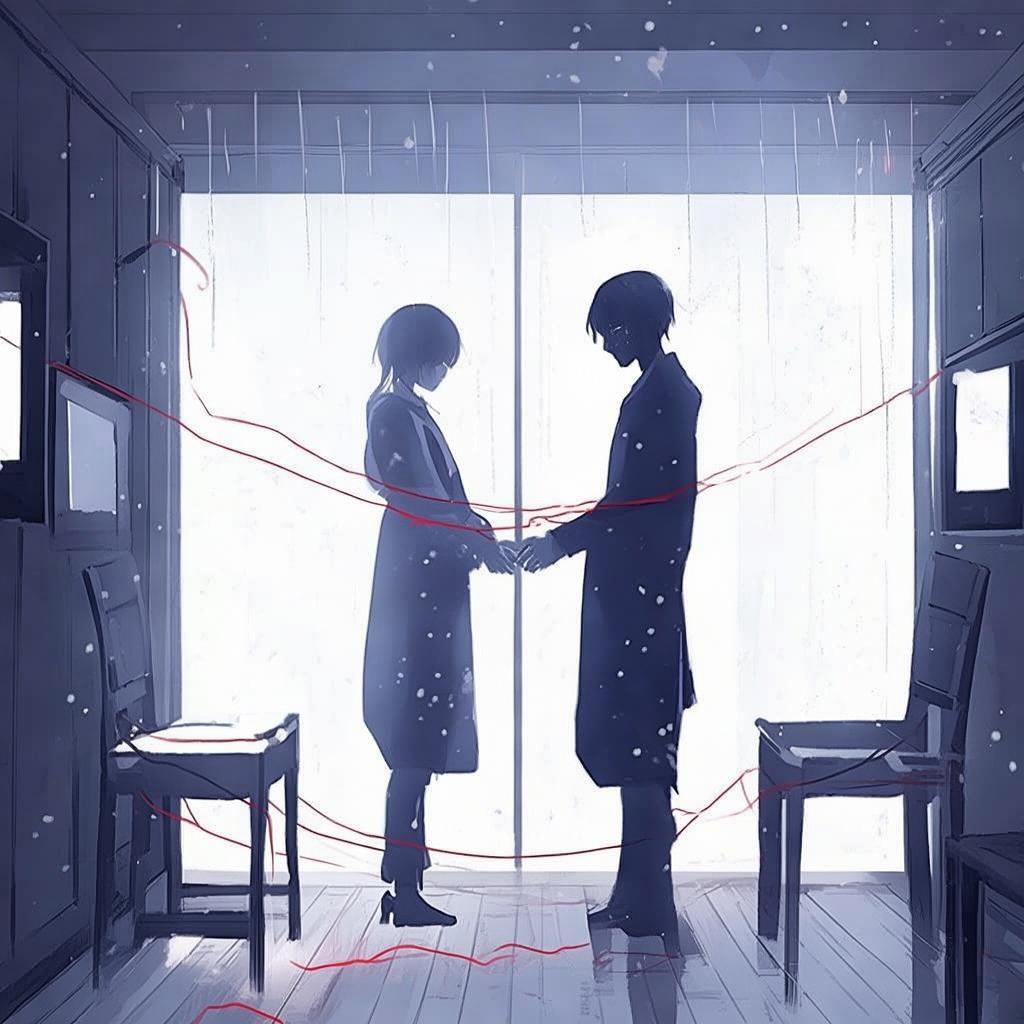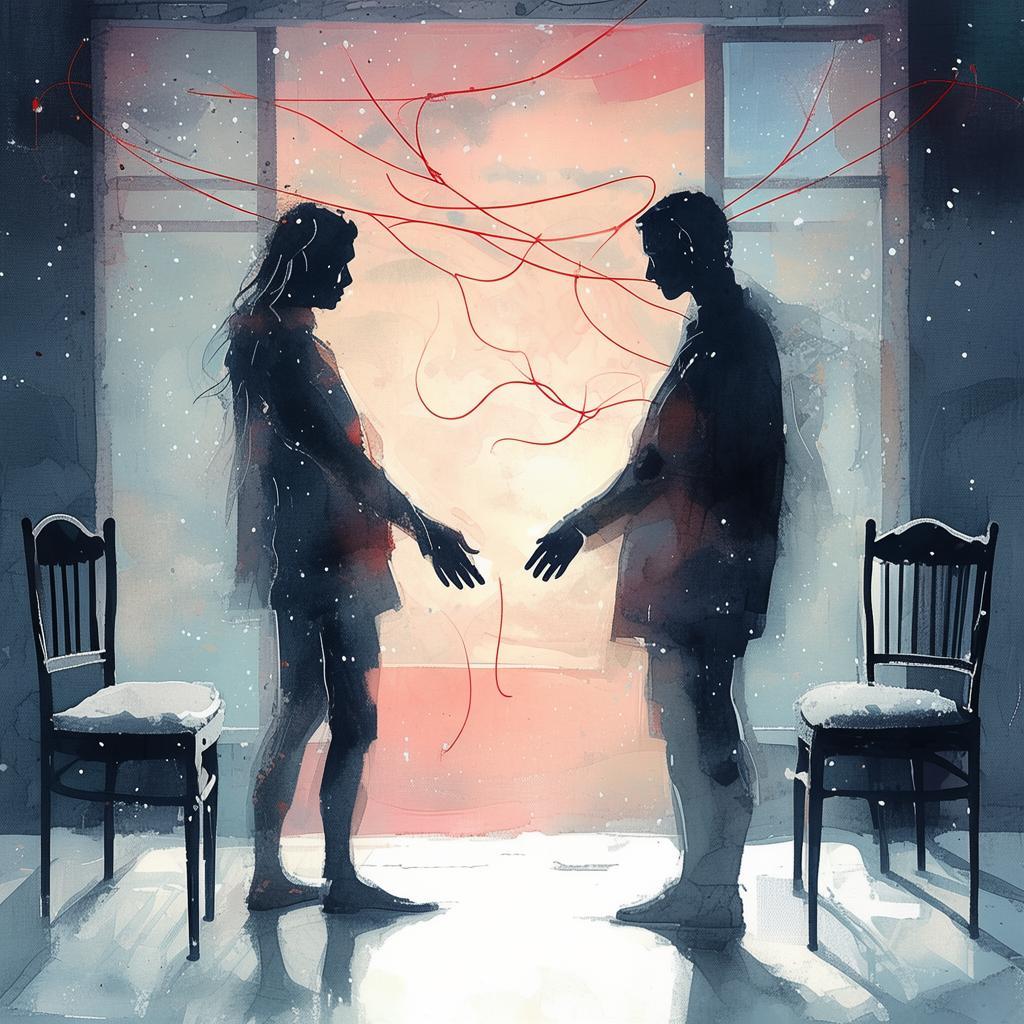The Veiled Canvas
In the hallowed halls of the prestigious Art Institute of Paris, where creativity and ambition collide with the fervor of youth, two names shone brighter than the rest: Édouard, the prodigious painter whose brushstrokes seemed to dance with life, and Claude, the sculptor whose works whispered secrets of the soul. Their rivalry was as legendary as the institution itself, but their forbidden love was a story untold, shrouded by the canvas of their careers.
Édouard, with his hazel eyes and the fire of creation burning in his chest, was the epitome of the romantic artist. His paintings, with their vivid hues and emotional depth, captivated the senses and the heart. Claude, with his stoic gaze and the hands that deftly carved wood into life, was a master of his medium, each piece a testament to his unyielding spirit.
Their rivalry began as a game of wits and technique, but as they pushed each other to their limits, a silent understanding grew between them. They were kindred spirits, bound by a shared passion for art and a longing for something beyond the canvas. It was a love that could not be seen, for it was hidden behind the mask of their public personas.
One evening, in the dim light of a small, smoky café, the two met by chance. Édouard's eyes met Claude's across the table, and in that fleeting moment, the veil of their art-world personas fell away. They spoke of their dreams, their struggles, and their hearts. It was a love that was not to be acknowledged, for it was a love that could not be contained within the boundaries of society or their own careers.
As their affair blossomed, so too did their art, but at a dangerous cost. Édouard's paintings grew darker, more passionate, and yet, somehow, more desperate. Claude's sculptures began to tell stories of love and loss, of passion and heartbreak, as if the very stone were weeping with his emotions.
The other students and faculty of the Art Institute whispered about them, casting judgmental glances and spreading rumors. But for Édouard and Claude, it was their art that spoke louder than words, their passion more powerful than any stigma.
Then, the tragedy struck. During a prestigious exhibition, Édouard's latest work, "The Veiled Canvas," was met with both awe and suspicion. The painting, a haunting portrayal of two lovers, their faces obscured by veils, seemed to hint at a forbidden affair. The crowd was divided, some praising the work's depth, others condemning the artists for their indecency.
As the scandal swirled around them, Claude's sculptures began to attract less attention, overshadowed by the scandal. Édouard, however, felt the full brunt of public opinion. His subsequent works were met with disdain, his career crumbling before his eyes.

The strain on their relationship was palpable. Claude, feeling guilty for the toll his art was taking on Édouard, tried to distance himself. But Édouard, fueled by a desperate need to prove his love, only pushed harder, his art becoming more intense and chaotic, until it bordered on madness.
In the final act of their tragic ballet, Édouard painted a self-portrait that spoke of his inner turmoil and love for Claude. It was a masterpiece, raw and unfiltered, a testament to the depth of their bond. But as the art world celebrated his new work, Édouard found himself alone, his heart shattered.
Claude, who had tried to escape the shadow of Édouard's love, was now consumed by the knowledge of his part in the tragedy. In a fit of despair, he carved a statue of Édouard's broken heart, but his own heart, already broken, shattered completely.
The Art Institute of Paris would remember Édouard and Claude for their masterpieces, their rivalry, and their forbidden love. But it was their tragic end that would echo through the ages, a cautionary tale of the cost of passion in the pursuit of art.
As the dust settled on the last of their works, the world continued to turn, and new stories were written. But in the quiet of the night, when the moonlight shone on the empty studios where their art once flourished, the memory of Édouard and Claude's love remained, a silent testament to the enduring power of passion and the tragic beauty of love that cannot be seen.
✨ Original Statement ✨
All articles published on this website (including but not limited to text, images, videos, and other content) are original or authorized for reposting and are protected by relevant laws. Without the explicit written permission of this website, no individual or organization may copy, modify, repost, or use the content for commercial purposes.
If you need to quote or cooperate, please contact this site for authorization. We reserve the right to pursue legal responsibility for any unauthorized use.
Hereby declared.

